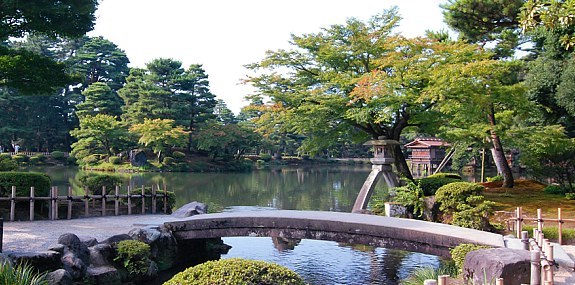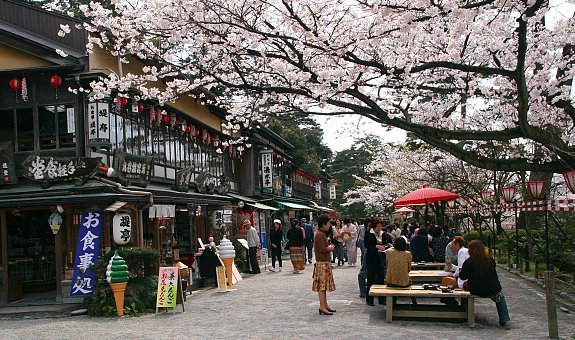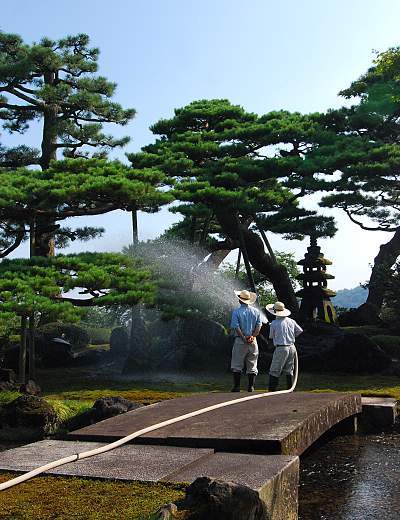
During World War Two, Kanazawa was Japan's second largest city (after Kyoto) to escape destruction by air raids. Consequently, parts of the old castle town, such as the Nagamachi samurai district and chaya entertainment districts, have survived in pretty good condition.
Today, Kanazawa remains an important city in its region and serves as the capital of Ishikawa Prefecture. The city boasts many historical attractions such as restored residences and districts, as well as modern museums. But Kanazawa's unchallenged main attraction is Kenrokuen, one of Japan's "three best landscape gardens" and by many considered the most beautiful of them all.
Kenrokuen Garden
Kenrokuen is justifiably classified as one of Japan's "three most beautiful landscape gardens" alongside Mito's Kairakuen, and Okayama's Korakuen. In fact, many people consider it the best of them all.
The spacious garden used to be the outer garden of Kanazawa Castle. Constructed by the ruling Maeda family over a period of nearly two centuries, it was not opened to the public until 1871.

Kenrokuen features various ponds, streams, waterfalls, bridges, teahouses, trees, stones and flowers. The water for the many streams and rivers of the park is diverted from a distant river by a sophisticated water system constructed in 1632.
The name Kenrokuen literally means "Garden of the Six Sublimities", referring to spaciousness, seclusion, artificiality, antiquity, abundant water and broad views, which according to Chinese landscape theory are the six essential attributes that make up a perfect garden.





No comments:
Post a Comment